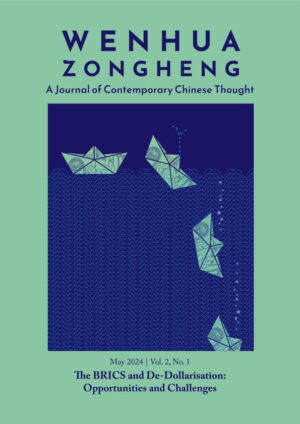In Solidarity with Gaza and the World’s Forgotten Millions
The moral burden lies with us all to express solidarity with the people of Palestine. And let’s not forget the other ‘silent’ conflicts and famines that are mounting across the world, which also demands a massive international response in the face of political apathy and indifference.
— Share The World’s Resources (STWR)
Since Israel’s military response in Gaza to the 7 October attack by Hamas, hundreds of civil society organisations have supported the call for a ceasefire. Global humanitarian and human rights groups also demand that all UN member states immediately halt arms transfers to Israel and Palestinian armed groups in order to avert further humanitarian catastrophe and loss of life.
While sharing the outrage and condemnation for the horrific attacks by Hamas, it is important to acknowledge its causes in decades of state-sanctioned violence against Palestinians by Israel. Rights groups have long documented the shameful hallmarks of colonialism and apartheid in Israel’s occupation of the Palestinian territories. Gaza has endured unimaginable suffering as a result of the illegal blockades imposed since the 1990s, a form of collective punishment that has turned Gaza into an ‘open-air prison’. But over the past eight months, Israel has gravely violated international law with its unprecedented military assaults on the besieged territory, killing upwards of 35,000 people including over 15,000 children.
Strong evidence suggests that the Israeli government’s actions violate the Genocide Convention, meaning it has inflicted conditions of life calculated to bring about the physical destruction of Palestinians. Up to 70 percent of homes in Gaza have been destroyed, and an entire civilian infrastructure decimated including hospitals, schools, universities, cultural sites and UN facilities.
The latest actions in Rafah—closing a critical border crossing and forcibly displacing an estimated 800,000 people with nowhere else to go—clearly flout a provisional ruling of the World Court, which ordered Israel to take ‘all measures within its power’ to prevent acts of genocide. Rather than upholding the order by immediately providing basic services and humanitarian assistance to Gazans, Israel is deliberately using hunger as a weapon of war and committing further grievous war crimes. Half of the population of Gaza are already facing catastrophic levels of hunger, with famine imminent in the north.
Complicity with genocide
What the Israel-Gaza war has painfully revealed is the complicity of North American and many European countries with Israel’s genocidal crimes. The major Western powers present themselves as the defenders of human rights and morality, yet give unwavering support to Israel as it defies international law with impunity. These governments have repeatedly vetoed or abstained from resolutions at the UN Security Council calling for a humanitarian ceasefire. They have thwarted diplomatic efforts to bring Israel’s offensive to an end. They have opposed South Africa’s genocide case at the World Court. They have shamelessly cut life-saving aid to the United Nations relief agency for Palestinians. And they continue to supply Israel with taxpayer-funded weapons transfers—particularly the United States that has worked with Congress to secure billions of dollars of additional military assistance.
The hypocrisy and duplicity of Western countries has been exposed like never before. The most powerful Western states treat the Palestinians as if they are not worthy of the universal human rights endorsed by the United Nations more than 70 years ago. Their support for genocide shames us all and risks fuelling an endless cycle of violence and hatred that may eventually endanger the whole of humanity.
In the absence of political leadership, the moral burden lies with ordinary citizens to speak out, march and express solidarity with the people of Palestine. It is up to us to take a stand and protest against a genocidal war and its systemic support from callous politicians and the mainstream media. Peaceful student protesters are showing us the way with Gaza solidarity encampments and hunger strikes, despite violent police crackdowns and their false portrayal in the media as being antisemitic. Their brave actions have already helped force the U.S. administration to take pause and tentatively oppose a major ground invasion in Rafah. Now it falls to the rest of us to enforce international law through citizen action, to support human rights for all and end this immoral and illegal war.
A wider crime against humanity
The Israel-Gaza war may be the gravest moral crisis of our time, the most visible genocide in history. But we mustn’t forget the other conflicts around the world that our governments are neglecting, in which millions of people also face violence and mass displacement. In Sudan, civil war risks triggering a severe famine, with half the population already requiring humanitarian assistance and protection. Human Rights Watch report that widespread war crimes and a genocide is likely to have been committed in the region, although it is seldom mentioned in the Western media.
In the Democratic Republic of Congo, endemic violence has left nearly 7 million people internally displaced, and the country is suffering the world’s biggest child hunger crisis. In Yemen, more than half the population is dependent on food aid after years of war has destroyed much of the country’s infrastructure. Last year, Somalia was brought to the brink of famine as a result of unrelenting drought and flare-ups of conflict. Hunger is also skyrocketing in multiple other countries, including Burundi, Djibouti, Gambia, Haiti, Lebanon, Liberia, Senegal and Malawi.
Life-threatening levels of food insecurity affect a staggering 281 million people according to the latest global assessment, with those worst affected living in South Sudan, Burkina Faso, Somalia and Mali. Many of these hunger crises don’t make the news headlines. The majority are in conflict-affected areas that—similar to Gaza—leave vast numbers of people without shelter, medicine, food or clean water. At a time when humanitarian needs are soaring, all these crises are tragically underfunded. The humanitarian system is enduring the worst funding gap it has ever faced, described by UN officials as an obscene competition of suffering to receive emergency aid.
While speaking up for the neglected citizens of Palestine, we also need to hold our governments accountable for these wider crimes against humanity. The major Western powers must act to end the 16-year siege of Gaza, provide unlimited humanitarian support to the region and immediately broker a ceasefire. And they must act to mitigate the ‘silent’ conflicts and famines that are mounting across the world, which also demands a massive international response in the face of political apathy and indifference. So let’s extend the spirit of the Gaza protests into a global movement for abolishing the injustice of hunger, and call upon all governments to adequately fund our most basic human rights instead of fuelling more devastating wars.
Adam Parsons is the editor at Share The World's Resources (STWR), a London-based civil society organization campaigning for a fairer distribution of wealth, power, and resources within and between nations. STWR is a not-for-profit organization founded in 2003 with Consultative Status at the Economic and Social Council of the United Nations. He publishes and speaks regularly on global justice and environmental issues, focusing on food insecurity, urban poverty, and people’s movements. He is the author of Megaslums: A Journey Through Sub-Saharan Africa and The Seven Myths of Slums: Challenging Popular Prejudices about the World’s Urban Poor. Read other articles by Adam, or visit Adam's website.






 The giant ITER construction site in September 2023 (Image: ITER/EJF Riche)
The giant ITER construction site in September 2023 (Image: ITER/EJF Riche).jpg?ext=.jpg) Bill Anders (centre) with Apollo 8 crew members Frank Borman (on the left) and James Lovell. The 1968 mission was the first manned Apollo mission launched aboard the Saturn V and first manned Apollo craft to enter lunar orbit. (Image: NASA)
Bill Anders (centre) with Apollo 8 crew members Frank Borman (on the left) and James Lovell. The 1968 mission was the first manned Apollo mission launched aboard the Saturn V and first manned Apollo craft to enter lunar orbit. (Image: NASA)-730x570-(Nasa).jpg) Anders' iconic photograph became known as 'Earthrise' (Image: NASA)
Anders' iconic photograph became known as 'Earthrise' (Image: NASA)